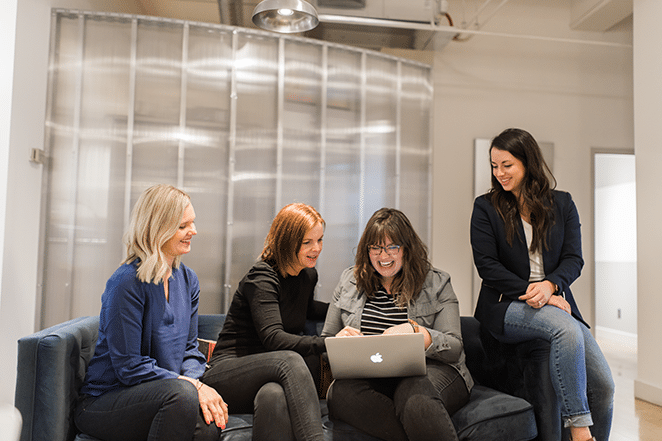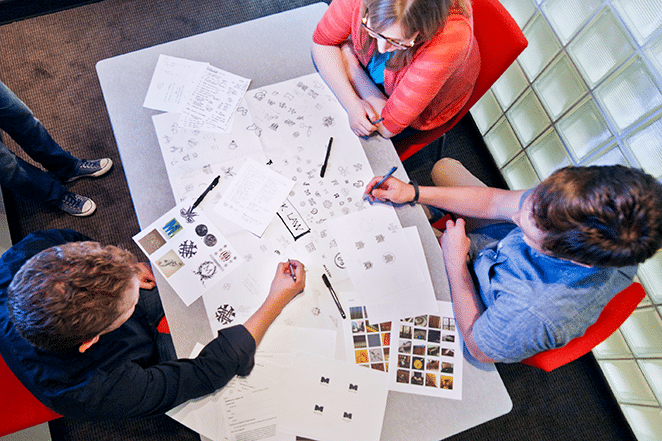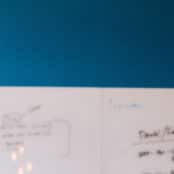
When Oxide Design Co. brings on a new client, we go through a pretty extensive discovery process. We’re of the belief that the most valuable branding work is authentic to that individual client. So we want to get to know them as well as we can before we try to represent them with visual design.
- What do they do?
- How are they different?
- Who are they?
- Who is their audience?
- How do they want to be perceived/how are they currently perceived?
- What are their goals and why?
- What kind of visuals do they like?
What do they do?
It’s important that you have at least a basic understanding of what they do. Ideally, you’d be well-acquainted enough that you could hold a short conversation about them with a friend.
How are they different?
In tandem with learning what they do, you should find out how your client is doing things differently than their competitors. Knowing any details about what sets them apart is going to give you something tangible to capitalize on when you start to create a their brand persona. (They’ll probably say something like, “It’s our people that make the difference.” That’s not enough detail. Every company says that. Ask more questions.)
Who are they?
How big is this company—a single-person venture, or a large corporation? What kind of culture do they strive for? Who are the key players, the ones who drive the brand? If possible, you should meet those key players and get a sense of their voice and personality.
Who is their audience?

How wide or narrow a swath of people are they targeting? Are there different categories of audience (e.g. a distributor group and an end consumer group)? What sorts of demographics do they know to look for when marketing their goods or services?
Your client knows a lot about their audience, whether or not they’re aware of it. So keep them talking. Ask them questions like: What does your audience care most about? Least? What influences them to make decisions? What about your products/services would appeal most to them? Where are they encountering your company, or how do they learn about you?
How do they want to be perceived / how are they currently perceived?
In addition to a vast knowledge about their audience, your client also knows some things about how their audience views them and feels about them. You need to figure out how this is in-line or disparate from your client’s desired perception, and if there is anything you can do to shift this in the right direction with your branding design.
What are their goals?

This is probably a question you should start to answer before you take on a job, so you know exactly what you’re getting yourself into. But there are still some finer points about your new client’s goals that you should clarify. Give them some space to reflect on their ambitions for this year and for five years out. These desired outcomes can help you learn about the direction they’re headed, what they value, and how you can shape their brand accordingly.
Why?
We at Oxide have found that more compelling than who a client is or what they’re doing is why they’re doing it. There are thousands or even millions of kinds of businesses. Your client chose their industry for a reason.
For instance, my dad owns a business that tests soil so farmers can know the exact right amount of Nitrogen to apply to every spot of their field. I always thought my dad’s agronomy career was a little strange. And then I found out why he started it. Right after school, he worked for a fertilizer company. They wanted him to basically sell as much fertilizer as he could.
My dad couldn’t stand this—it was bad for the environment (for the land and water to be inundated with too much fertilizer) and for the farmer (paying for unnecessary fertilizer that wasn’t actually helping their yield). Now, my dad can help farmers get it right and also take better care of the earth. My opinion of my dad’s work shifted from weird to respect.
“Your client might have a story about what motivates them to be in the business that they’re in. ” If you could capture something about their motivation in the brand you build, the audience has a chance to get to know your client that much better.
What kind of visuals do they like or hate?

I would recommend that you engage your client in at least one visual exercise, like a mood board process. Not only can you glean a lot about their tastes, but you can also learn something new about their brand—something that just answering questions can’t always uncover. At Oxide, I’ve learned to tie this visual process to a question like, “What does this represent about your brand?”
Distill your findings!
Find a method that works for you to summarize what you’ve found—something you can reference at every step of the way to check that what you’re creating is truly in-line with the essence of your client. At Oxide, we create a set of core values at this stage for every client, no matter the scope of the project. We like to have a succinct list of attributes to keep in mind and to check our work against.
I hope this list helps give you a solid foundation upon which to build your next brand.








Comments ( 2 )
Elder Law Attorneys
May 20, 2025
Understanding spousal protection rules within Medicaid regulations is essential for families. Ohio Medicaid attorneys provide clear explanations.
bonus za registraci na binance
May 15, 2025
I don't think the title of your article matches the content lol. Just kidding, mainly because I had some doubts after reading the article.